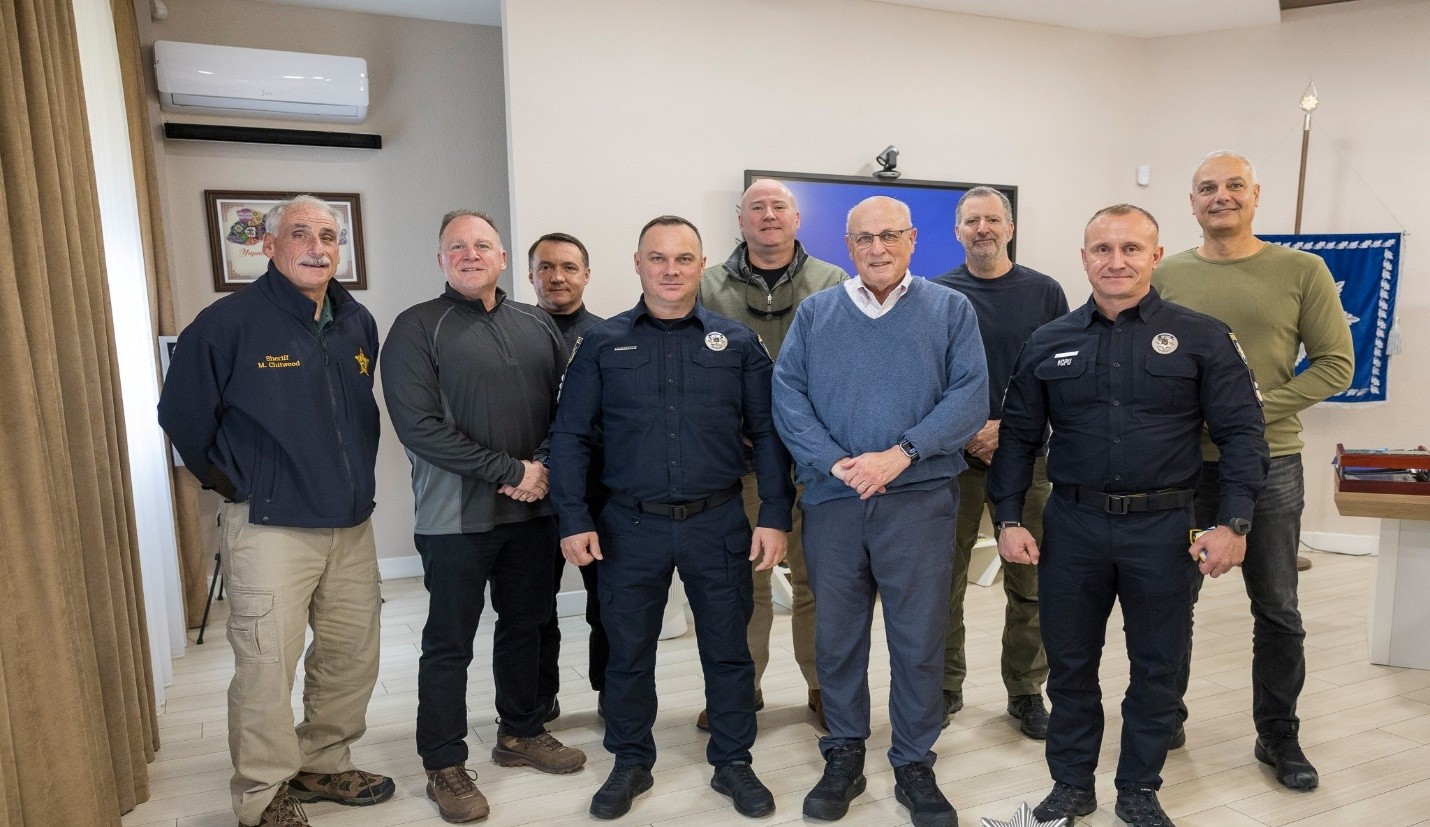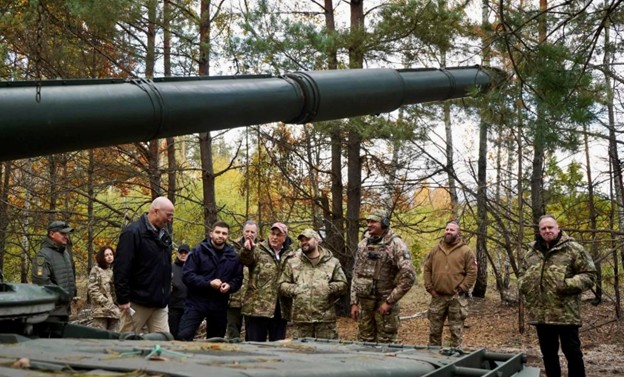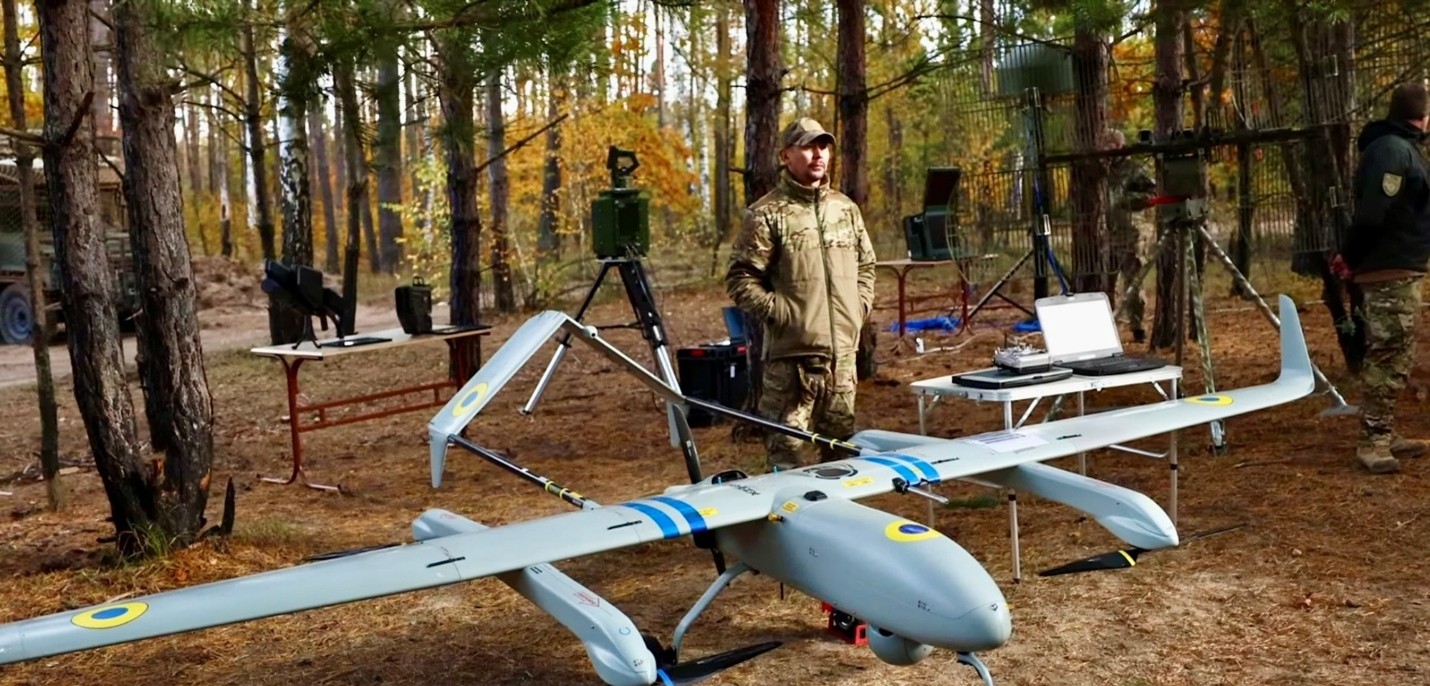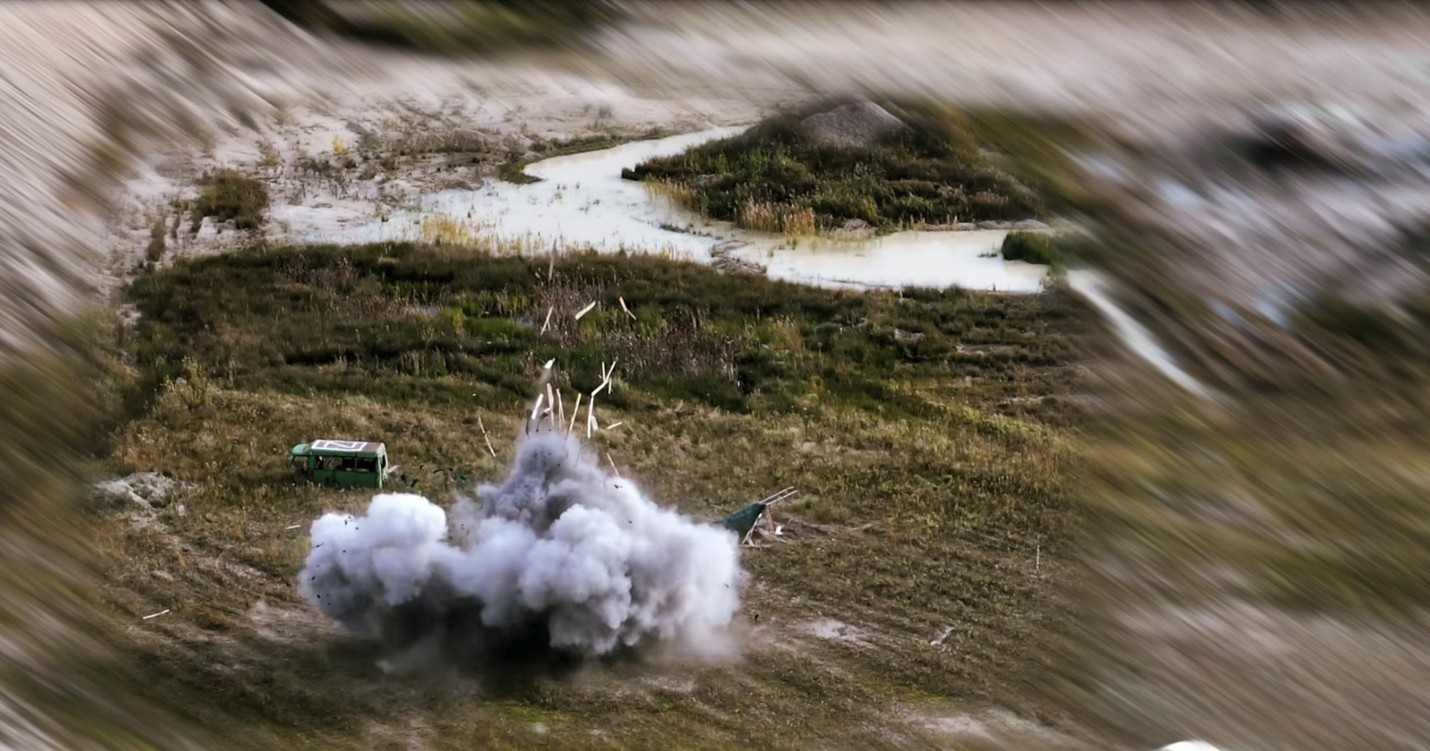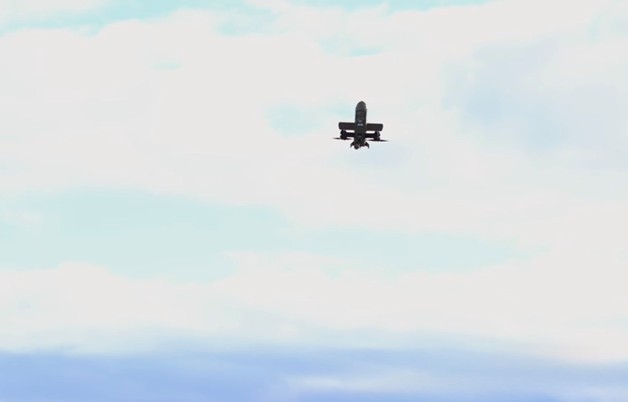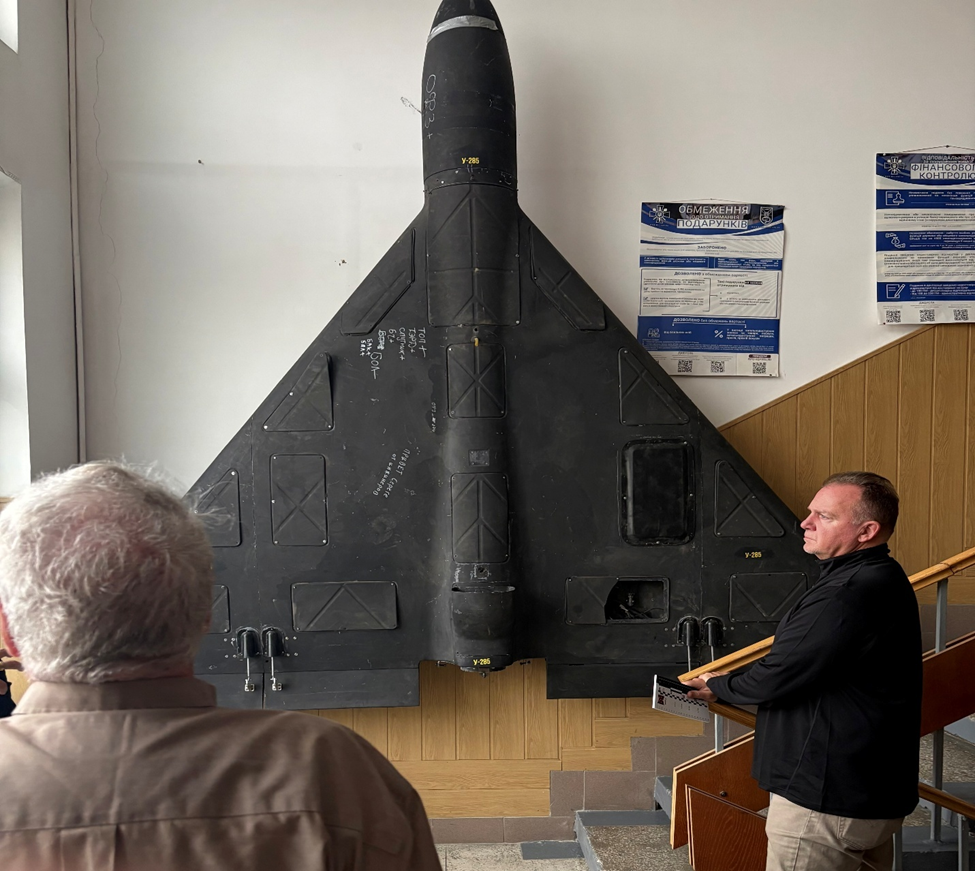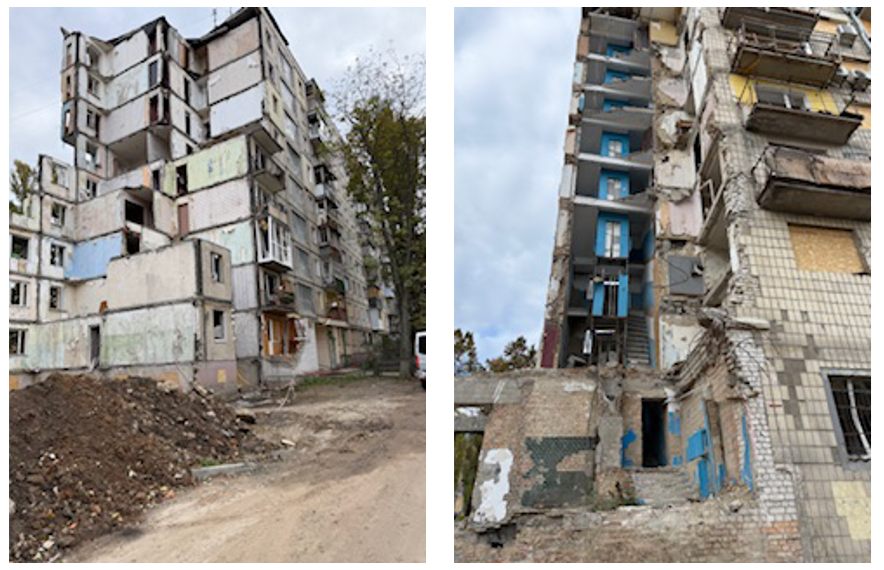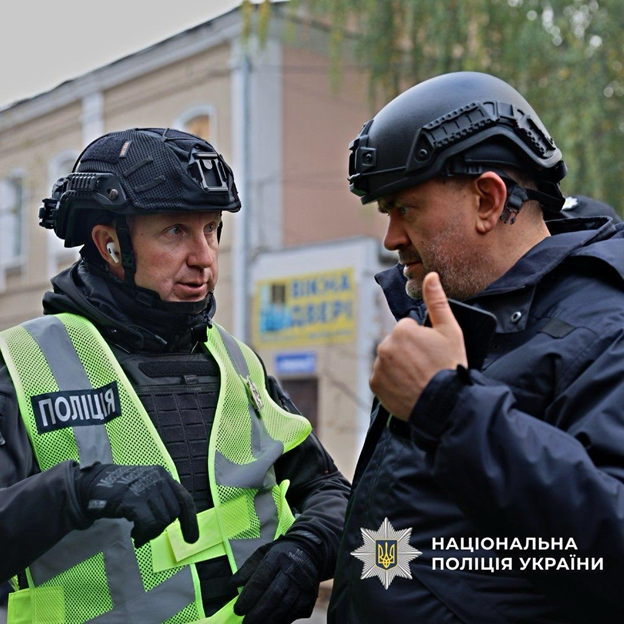|
November 1, 2025 What America can learn from Ukraine about the danger posed by drones
PERF members, As readers of this column may recall, I have visited Ukraine several times since Russia’s invasion nearly four years ago. During the first trip in January 2023, I met with General Ihor Klymenko, then head of the National Police of Ukraine, to discuss the challenges facing the police. During that trip, PERF presented 1,000 sets of Under Armour boots and ColdGear tops and bottoms to officers in the Kyiv Regional Police. On a follow-up visit in March 2023, we focused on the role of police in investigating war crimes. This past spring, I returned to learn how the country is supporting the soldiers, police officers, and civilians injured during the war. Last month, I traveled back to learn more about how the Ukrainian police and military are mitigating the threat of malicious drone use. PERF published a report on this topic in 2020, and I wanted to learn more about how the threat may have changed in the years since. Like my previous trips, this visit was supported by Howard Buffett, a philanthropist and the former sheriff of Macon County, Illinois, who accompanied me on the trip. Buffett has made more than 20 trips to Ukraine, and he has taken a special interest in the police there. His foundation has helped Ukraine rebuild police stations damaged in the conflict, procure Rapid DNA machines to help identify casualties of the war, and provide other critical assistance to officers serving in the war zone. The foundation has also provided considerable humanitarian support throughout the country. Also joining me for this trip were Sean Patterson, chief of the University of Tennessee Police Department; Michael Chitwood, Sheriff of Volusia County, Florida; Colonel Talal Masri from the Palm Beach County (Florida) Sheriff’s Office; Robert Tracy, Chief of the St. Louis (Missouri) Metropolitan Police Department; and Matthew Klein, a former Assistant Commissioner for the U.S. Customs and Border Protection. The drone issue is of the utmost importance to troops in Ukraine and to police agencies in the United States. As we’ve seen during the war in Ukraine, drones present a serious threat to public safety all over the world. Here in the United States, state and local law enforcement’s ability to mitigate that threat is limited not only by their technical capabilities but also by their lack of authority: State and local governments do not currently have explicit legal authority to identify and take action against unauthorized or threatening drones without coordinating with federal agencies. I believe we are likely to see an attack involving drones in the near future, and local police are not currently in a good position to counter the threat. To better understand this issue, I felt it was critical and timely to engage with police officials in Ukraine, who find themselves confronting this threat every day and night. Before diving into the visit and what we found, I’ll provide some context on the complexity of this matter and the differences in how it’s affecting Ukraine and the United States. Our group discussed these differences at length during our visit as we sought to learn as much as we could from Ukraine, so we could apply lessons learned to what is clearly a much different environment here. Ukraine is at war. The lines between the jobs done by our Ukrainian police colleagues and those done by the military are blurred. Police personnel are often deployed to the front lines and perform many duties that overlap with Ukrainian military personnel. This includes using drones offensively and counter-drone technology defensively. These blurred lines are not something we typically see in policing in the U.S. Because Ukraine is at war, vast swaths of its airspace are closed, so police and military personnel can use more aggressive tactics when engaging with incoming weaponized drones. Simply put, they can launch different types of weapons at any given moment. In the U.S., we’re clearly operating under very different circumstances. We landed in Poland and traveled by train to Lviv, where we toured the Superhumans rehabilitation center funded by the Howard G. Buffett Foundation. From there, we went to meet with General Oleksandr Shliakhovskyi, who is in charge of the Lviv region for the National Police of Ukraine. Like so many areas in Ukraine, Lviv endures drone and missile attacks on a regular basis. According to General Shliakhovskyi, there are no safe places for civilians outside of shelters, which must remain open and accessible at all times. General Shliakhovskyi explained that police work alongside local military units to protect against incoming drones. He said it’s difficult to shoot down many types of drones, such as Shahed drones, which fly 3,000 to 4,000 meters (approximately 2 to 2.5 miles) above the ground at high speeds. In the past, the police and military were able to shoot down drones using rudimentary weapons. Now they require more advanced systems to counter newer and faster drones. I asked General Shliakhovskyi about Russia’s use of “double-tap” strikes, whereby an attack takes place, draws in police and other first responders, and is followed by a second attack in the same location designed to target those first responders specifically. He said his officers and leaders understand the risks, use early warning systems that can provide some notice of other incoming attacks, and do their best to respond at times when things are clear. Much of this awareness comes from experience after nearly four years of war. We traveled overnight on a 10-hour train ride to Kyiv. There we met with General Ivan Vyhovski, who leads the National Police of Ukraine, and General Andrii Nebytov, one of his deputies. General Vyhovski laid out the challenges facing a national police force during wartime. Ukraine’s police officers are rotated to assignments on the front lines, causing some staffing shortages for standard law enforcement operations. On the topic of drones, General Vyhovski said that his officers use drones for many types of missions, including offensively against Russian forces. He explained that originally, they used drones only for intelligence gathering, but over time they expanded their drone program to conduct strikes against Russian troops and to resupply front-line units with food, water, and medical supplies. He also said that Ukrainian drone technology has evolved significantly in the past several years, enabling more complex missions with heavier payloads and more sophisticated electronics.
Michael Chitwood, Robert Tracy, a Ukrainian police translator, General Ivan Vyhovski, Sean Patterson, Chuck Wexler, Matthew Klein, General Andrii Nebytov, and Talal Masri. The general discussed some of the challenges police face when mitigating the threat of incoming drones. They use technology that intercepts and blocks the electronic signals drones use for navigation and targeting—but that technology is effective only on drones that rely on radio frequencies or GPS navigation to conduct their missions. A newer threat comes from drones that do not rely on any type of electronic transmission but instead use hair-thin optical fiber wires that can reach for miles, allowing the tethered drone to operate without emitting any signal. In the United States, this technology could pose a major threat to our critical infrastructure, sporting events, and other mass gatherings.
Officers from the National Police of Ukraine brief our delegation on drone operations. From the National Police headquarters, we went to a field demonstration of drone and counter-drone capabilities in battle scenarios. We donned heavy military-style coats and eye and ear protection, then moved through various stations to see first-hand how Ukrainian personnel train for wartime operations. We saw armored personnel carriers, camouflaged ambulances, tanks, radar detection systems, and dozens of drones equipped to conduct surveillance and offensive and defensive operations. Our group found it striking that these were police officers, not military forces.
Sean Patterson, Robert Tracy, and Chuck Wexler receive a hands-on drone demonstration from a Ukrainian police officer.
Our delegation learns about various military systems used by the National Police of Ukraine.
Ukrainian drone used by police for frontline operations delivering different types of payloads. During the various demonstrations, we closely observed the different types of drones the Ukrainian forces use: small, commercially available drones capable of dropping explosive devices and large locally built systems with payloads of more than 30 pounds that can drop water or medical supplies to forward operating units. We also saw a demonstration of an interceptor drone capable of reaching speeds that can match the Shahed drones’, thereby providing some mitigation capabilities.
Reconnaissance drone.
Structure destroyed by explosive device dropped by a drone.
Interceptor drone capable of extremely high speeds designed to target and intercept enemy drones.
Jet-powered Shahed drone captured after running out of fuel and landing in an open field. We later visited the Central Scientific Research Institute of Armament and Military Equipment of the Armed Forces of Ukraine to learn about some of its engineers’ recent discoveries. Some of their captured Russian drones appeared to lack communications systems for navigation and target selection, and instead used artificial intelligence to travel and select targets independently. This new technology is designed to expand range, limit detection, improve target designation—and increase the number of casualties. We then visited Ukraine’s National Academy of Internal Affairs, which provides bachelor’s and master’s degree educations to thousands of students and police cadets. We were joined there by Colonel Serhii Bolinov, who is in charge of investigations in the city of Kharkiv. The Academy has a program that educates children of law enforcement officers who were killed or injured in the war. Graduates ultimately join Ukraine’s security services. While meeting with academy staff, we toured the facility and asked questions about its offerings. The meeting was interrupted by loud alerts coming from our phones that a ballistic missile had been launched, and we were asked to follow our hosts to the basement to seek shelter. Luckily, we soon received the “all clear” and resumed the session. It was another stark reminder of life in Ukraine for nearly the past four years. The academy has a department dedicated to training future officers to be drone operators. Colonel Bolinov said that the use of drones has changed the nature of police work in Ukraine. The police use drones to assess a situation after an attack to determine the number of casualties and overall collateral damage. A supervisor can then decide in real time what resources to activate. As we were wrapping up, I asked Colonel Bolinov what police agencies around the globe can learn about preparing for drone threats. His reply was, “You should have started yesterday.” Our final stop was undoubtedly the toughest, where the reality of this war really set in. We made several stops in neighborhoods in Kyiv that had been targeted by Russian ballistic missiles. I had seen such scenes before, but this was the first visit for others in our delegation. Local police officers described in detail how and when the strikes took place, and they even had videos on their phones they had taken as they responded. Most had occurred in the early morning hours when residents were asleep. We saw the aftermath of an August 28 missile and drone attack that killed at least 20 people, including four children.
Buildings in the Kyiv region that were destroyed in attacks this summer, resulting in dozens of fatalities. As I mentioned, there are substantial differences between drone issues in Ukraine and those in the United States and other parts of the world. But this trip made clear that we need to move much faster—with a real sense of urgency—to develop technologies and obtain authority to prepare for what is sure to come. Although there are dozens of companies developing the latest drone detection and mitigation technology, there are limits to how well they can actually stop incoming drones. A large portion of detection technology relies on detecting and identifying electronic frequencies the drones emit to force them down and identify the operators. But that won’t work on drones with newer capabilities like those that fly autonomously on programmed routes or those that are tethered using fiber optic cables and don’t emit any signal at all. These challenges need to be overcome as we contemplate how these weapons could be used against large gatherings, like major sporting events, concerts, or critical infrastructure here in the United States. Compounding this challenge is a lack of a clear legal framework and, as a result, a lack of authority for state and local governments to take mitigation action against drones beyond initial detection. In June, President Trump issued two executive orders pertaining to drones: “Unleashing American Drone Dominance” and “Restoring American Airspace Sovereignty.” Both orders direct various federal agencies to move quickly to resolve ambiguous rules; address dependence on foreign manufacturers; and move past bureaucratic hurdles to improve coverage of critical infrastructure, increase delegated mitigation authorities, and stimulate new investment by U.S.-based technology companies. While the executive orders set ambitious goals for counter-drone operations and airspace security, much of the heavy lifting still lies ahead for federal agencies and Congress. Many critical authorities—from counter-drone legal frameworks for state and local governments to grant funding, rule-making, and interagency coordination—need to be developed and resourced. This week I spoke with Cathy Lanier, the former police chief in Washington, D.C., and now the Senior Vice President for Security at the National Football League. She has waged an 11-year battle to obtain the authority for state and local police to mitigate the threat from drones should they suddenly appear over an NFL stadium on a Sunday afternoon. Chief Sean Patterson expressed similar concerns while we were in Ukraine, as he often has 101,000 attendees at University of Tennessee football games on a Saturday. With the World Cup and Olympics on the horizon, the United States needs to be prepared for this clear and present danger. One week after we left Ukraine, I heard from Colonel Serhii Bolinov. He told me three Russian Shahed drones struck a kindergarten 150 meters (about 500 feet) from his office while 48 students were sheltering in the basement. One person was killed and nine others were injured; fortunately all 48 students survived. The pictures of terrified students being rushed to safety by police and parents are heartbreaking.
Colonel Bolinov and another Ukrainian police officers after the drone attack on a kindergarten in Kharkiv. (Source: National Police of Ukraine) This is what Ukraine is facing today, and what the United States will face in the near future. We also discussed this topic at our recent Town Hall Meeting in Denver, and you can click here to watch that conversation. We were honored to be joined by General Andrii Nebytov, and Chief Sean Patterson and Chief Robert Tracy both shared their observations from the trip. Best, Chuck |

